Roundup: PPA Festival 2016 – The Independents
This year, for the first time, the PPA Festival dedicated one of its four stages to independent magazines, and we were very pleased to curate the speakers and play host for the day on Thursday 12 May.
You can see full details of all the speakers across all the stages, plus LOTS of pictures on the festival website, but first scroll on for our summary of the independent stage…
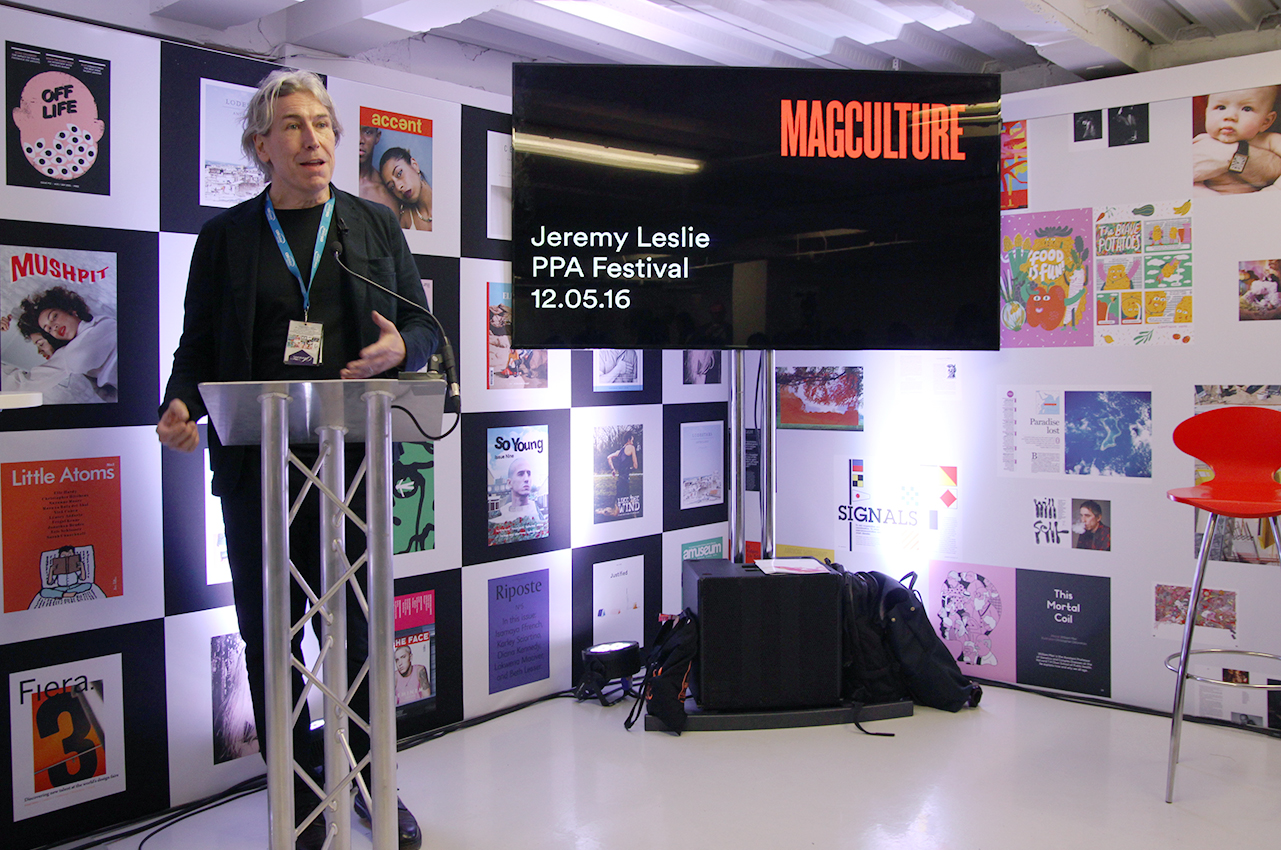
The state we’re in (Part I): Jeremy Leslie (magCulture)
He’s been making magazines for 25 years and writing about them for 10 years, and last year he opened his own shop to sell them, so Jeremy was the obvious choice to kick off the day with an overview of indies today.
His introduction to independent magazines mapped out five categories:
1. Change
Jeremy began with the magazines that challenge conventional media narratives, like Beirut-based The Outpost, which presents an optimistic view of the Middle East, or Ladybeard and Mushpit, both of which respond to traditional women’s lifestyle magazines.
2. Niche
He used magazines like Tomtom (a title for female drummers) or Sabat (a magazine about modern witchcraft) to show the ever-narrower niches independents are exploring.
3. Reading
Jeremy reported that magazines built around reading are doing particularly well in the magCulture shop, busting the perennial myth of short attention spans across the board. Examples highlighted were arts and literary journal The White Review, and the anthropological magazine Peeps.
4. Branded
Magazines created by brands were picked out for their quality and attention to detail, most notably cycling title Mondial (published by Rapha) and The Happy Reader (published by Penguin in collaboration with Fantastic Man).
5. Experimental
And finally, Jeremy’s personal favourite category featured those magazines that take a unique approach to publishing, from the written content to the physical format. Titles highlighted included Unstate, the magazine of audiovisual culture; MacGuffin, which explores the life of objects; the brilliantly art directed Buffalo Zine; and ultra-conceptual photo title Ordinary.
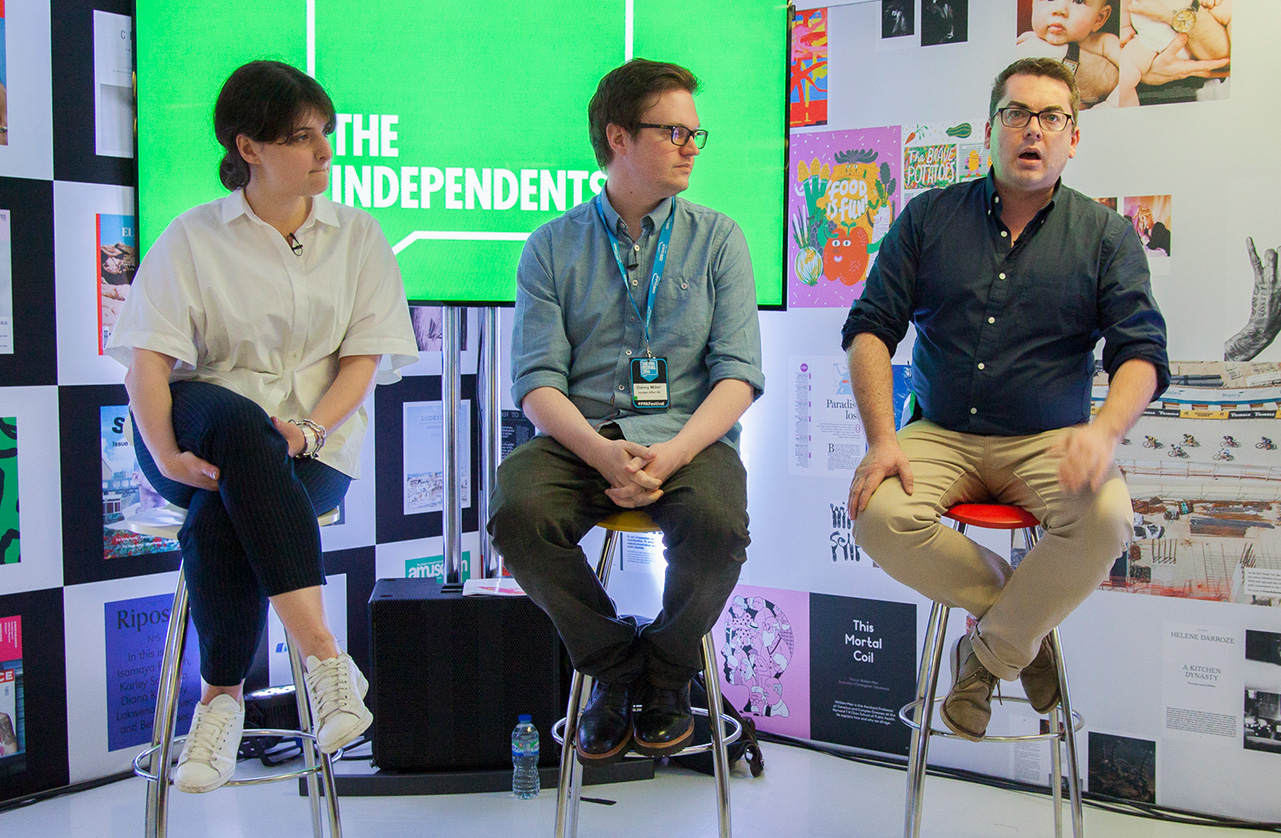
Building a business: Ranya Johnston (Tank), Danny Miller (Human After All / Weapons of Reason), and Jeff Taylor (Courier)
Next up was a panel examining the business of independent magazines, with each panelist representing a different approach to making money from independent publishing.
For Jeff and his co-founder Soheb Panja, the decision to pursue the street press model came from his ambition for Courier to establish itself as a big media title. “The only way we can do that is to offer the magazine to people where they actually are – in cafés and co-working spaces – rather than on the newsstand”.
The idea for Weapons of Reason came from a talk by Al Gore at SXSW in 2015, in which he discussed the challenges facing the world and made complex issues accessible. “In Weapons of Reason we combine what we’re best at – data visualisation and a particular style of illustration – to create a magazine that’s engaging and educational at once,” Danny explained, noting that publishing the magazine had led directly to work for clients including Greenpeace.
Tank was founded in 1998, and Ranya emphasised the importance of always putting quality over quantity and keeping an element of surprise in the magazine. Working as a small team encourages a close, family-like atmosphere, and speaking about finances, she said of her team, “It’s their job to spend money, so it’s my job to go out and find that money… It’s like a household budget – you spend what you can, and nothing more”.
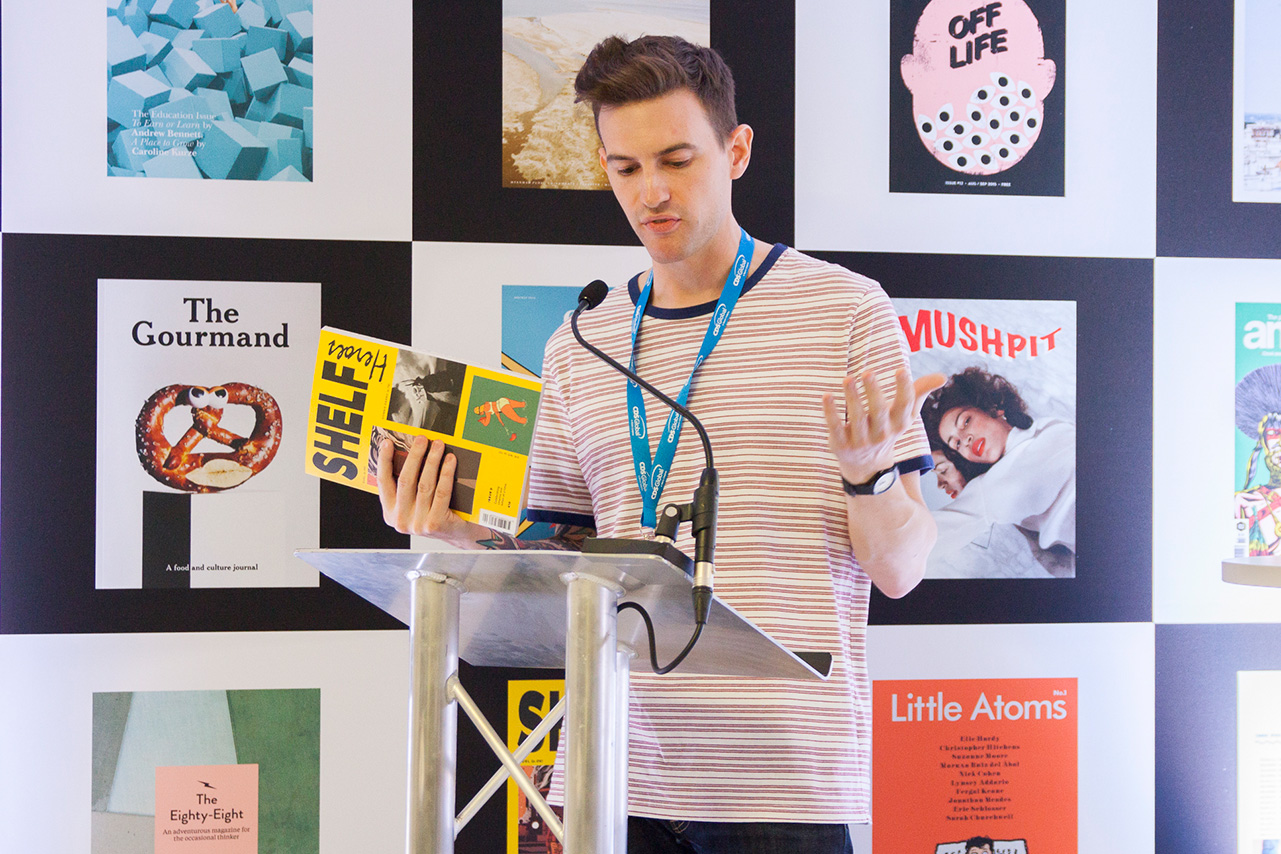
Graphic design: Ben Smith (Shelf Heroes) and John Summerton (Sidetracked)
For this session we invited a pair of magazine-making graphic designers to talk about their approaches, and how they put illustration and photography at the centre of their magazines.
Exploring film one letter at a time, Ben’s brief to contributors is simple: “Pick a film starting with this letter, and create something”. More than anything, Ben said, Shelf Heroes is about the contributors’ personal experience of a film. “I really consider Shelf Heroes a fanzine, so it’s been important to try and maintain that energy”.
That means the design is instinctive, without grids or set typefaces, and the pieces are arranged as they fit. “There are no rules – I do whatever I feel like and, most importantly, I have fun with it”.
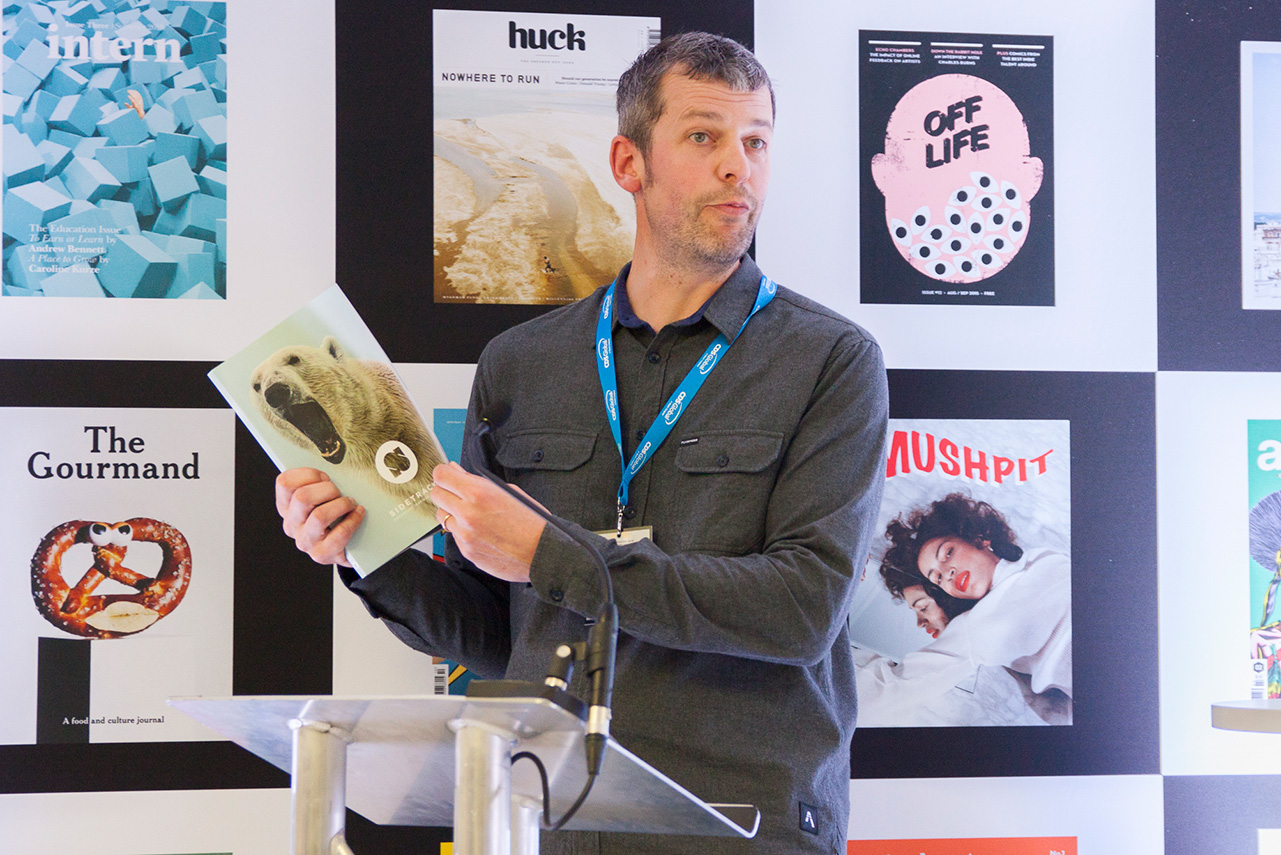
Sidetracked was also started as a personal project, but that’s where the similarities end. A big, heavy adventure travel magazine filled with breathtaking photography printed large across the page, John showed how he uses a strict grid to provide an underlying structure and showcase the visuals. “Sidetracked is designed to make the most the photography, which is the backbone of the magazine”.
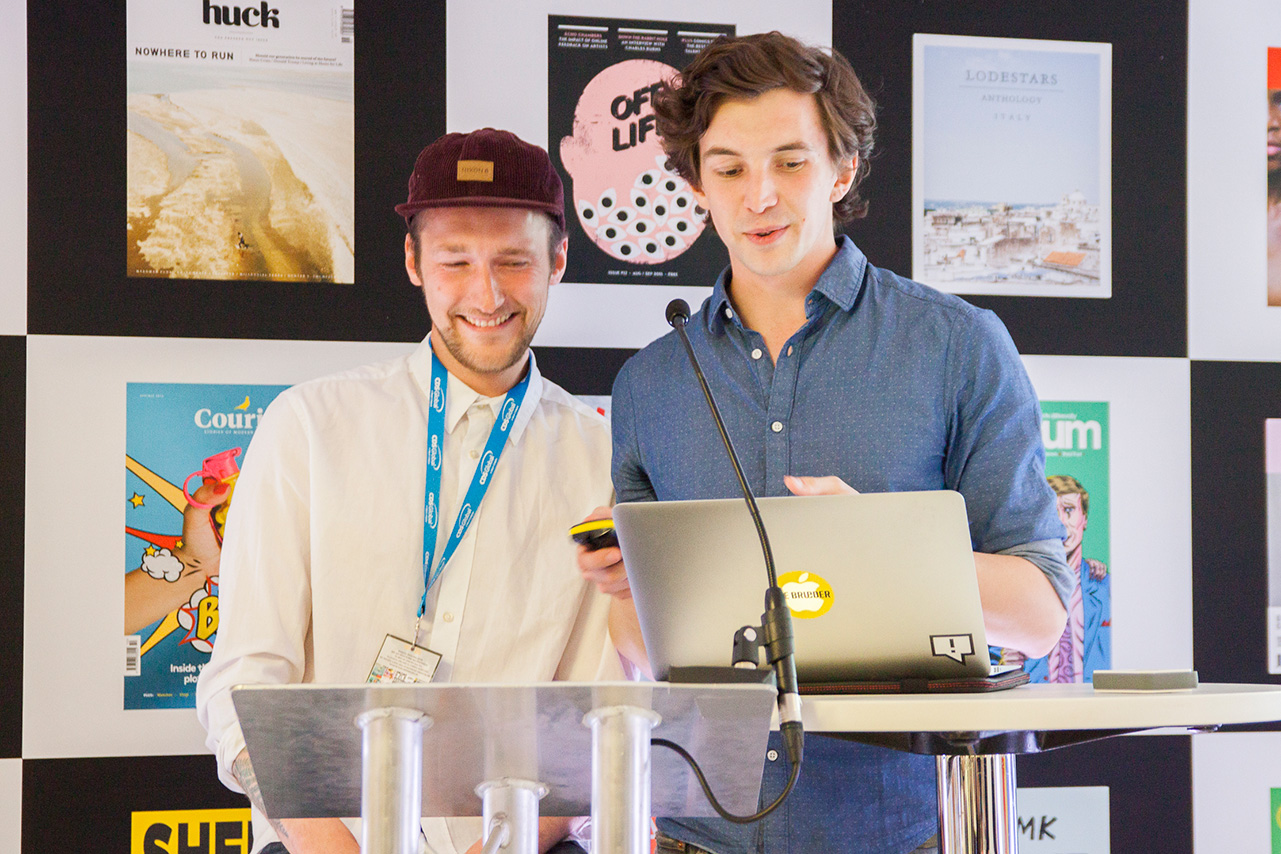
The state we’re in (Part II): Malte Brenneisen and Urs Spindler (Indiecon)
The founders of the Hamburg indie magazine conference, Indiecon, flew in to kick off the afternoon and add an international perspective to the day. Malte and Urs spoke about why they think the independent magazine sector has become so successful, and why indies are here to stay.
They noted that the success of some independent magazines is thanks to a unique editorial approach, for example readers of Benji Knewman bond with a person, rather than a piece of paper; and Weapons of Reason provides a tool for better understanding the interconnected challenges facing the world. Other successful titles tap into a global niche, like Offscreen (for the people who build the web), Hello Mr (for men who date men) and MC1R (the magazine for redheads).
But perhaps most importantly, there’s a strong sense of community and collaboration among independent magazine makers. Publishers willingly share their experiences, tips and tricks, and Malte and Urs picked out Human After All’s Publishing Playbook and Offscreen editor Kai Brach’s Facebook group Indie Publisher Club as fantastic resources for sharing ideas and insider information.
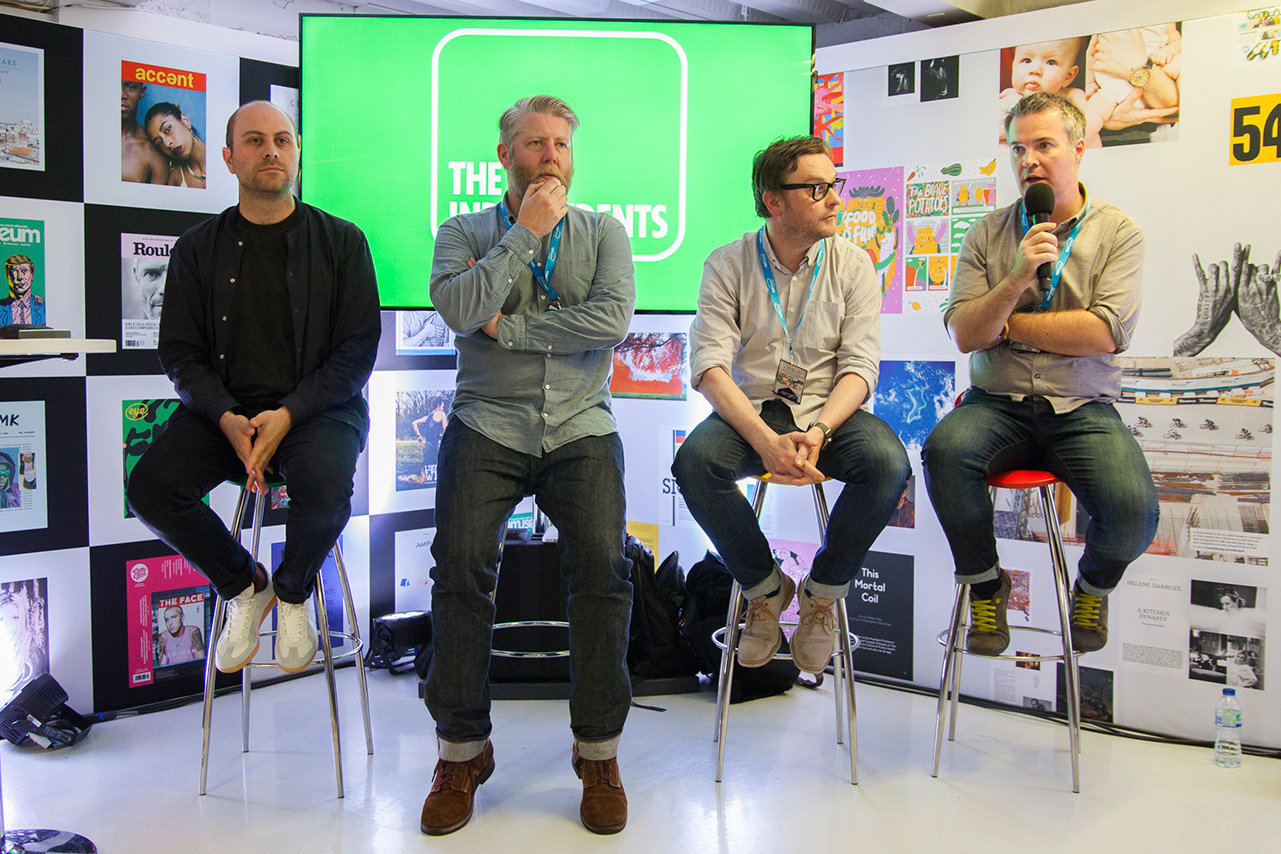
Video: David Lane (The Gourmand), Nick Watts and Mark Hooper (Hole & Corner) and D’Arcy Doran (Huck)
The second short session of the day looked at video, and how publishers use the format as a way to package, present and monetise content, and expand their audience.
First up was D’Arcy from the youth culture magazine Huck, who explained how video is first and foremost a tool to reach new audiences: “Our films are easily shared and embeddable, and we find they can go places the magazine can’t go”.
Just like the magazine, the films aim to show a different side to the world. “In the aftermath of the Paris attacks, the terrorist cell responsible was traced back to Brussels, which was then presented in the media as a hotbed for radicalisation of muslim youth. With Teenage Utopia, we presented a counter-narrative”.
Hole & Corner celebrates craft, beauty, passion and skill, and the attention to detail and slow pace of the magazine are translated into film: “Today, being slow and quiet is disruptive”.
Video functions as a link between print and digital and The Catapult was created by a father and son, Jake and Jacob Sutton, who were featured in the print magazine. “The films are a window into our world – if viewers like what they see in a two-minute video they can engage further by buying the magazine. It’s been successful strategy so far”.
With co-founder David Lane’s background in film, video became a natural extension of The Gourmand. “The process of making film is surprisingly close to that of making a magazine,” he said, noting that both require teams of people working with close attentin to detail to combine words and images that tell a story. And, he said, making the magazine has given him access to a fantastic range of creative collaborators, some of whom have gone on to work with him on commercial video projects for clients like Google and Facebook.
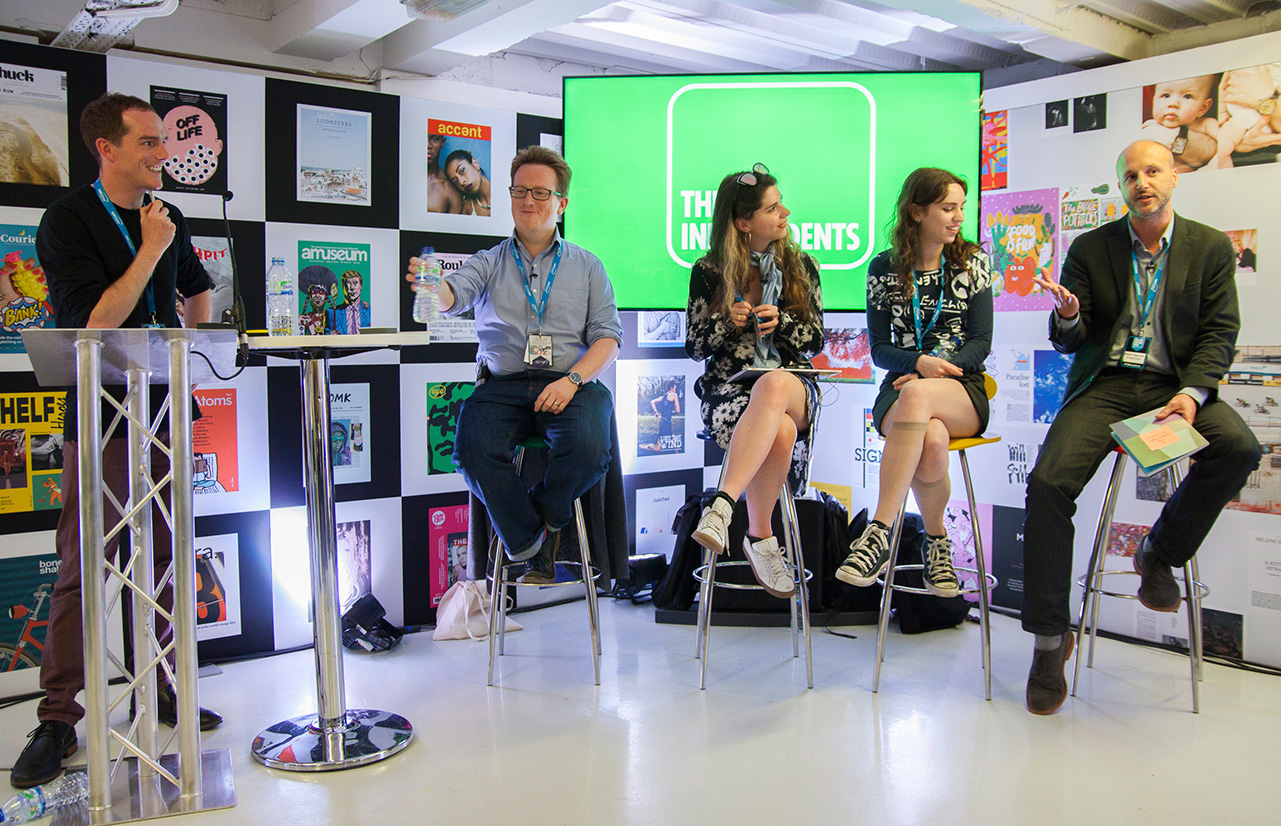
Getting it done: Rob Orchard (Delayed Gratification), Char Roberts and Bertie Brandes (Mushpit) and Simon Tapscott (The Eighty-Eight)
In the last panel of the day, magazine makers shared their first-hand experiences of publishing, discussing the pitfalls they’ve faced and the solutions they found along the way.
Simon from Jamie Cullum’s magazine The Eighty-Eight was first up: “When we shipped the first issue to the US, I didn’t even consider customs, so our boxes were sitting in the airport for days while I read up on it. And I also didn’t know, until £500 later, that they charge for storing them.” Making the most of Jamie’s fanbase while also branching out to new audiences who will appreciate the magazine on its own terms, Simon said they’re learning as they go and will keep on experimenting with the project.
Next up was Rob from Delayed Gratification, a current affairs magazine revisiting news after the dust has settled. He reflected on the fact that they started out as a team of journalists, but with nobody who could take charge of essential functions like marketing. Having made that up as they went along (and with some major successes, like being featured on Radio 4’s Today Programme) they are finally putting people in place to fill those roles.
Starting out with no magazine publishing experience, Bertie and Char from Mushpit said they have made a lot of mistakes along the way, including ordering the wrong trim size and ending up with “one issue we hate looking at to this day”. But Char pointed out that those mistakes bring valuable lessons: “I think it’s really good to have some degree of knowledge on everything that goes into making a magazine, even if you don’t do everything 100% yourself, so that you can discuss it with whoever’s in charge of it.”
When asked for their advice to would-be magazine makers, the panelists agreed: Find your niche, persevere and have fun, and it will translate onto the page.
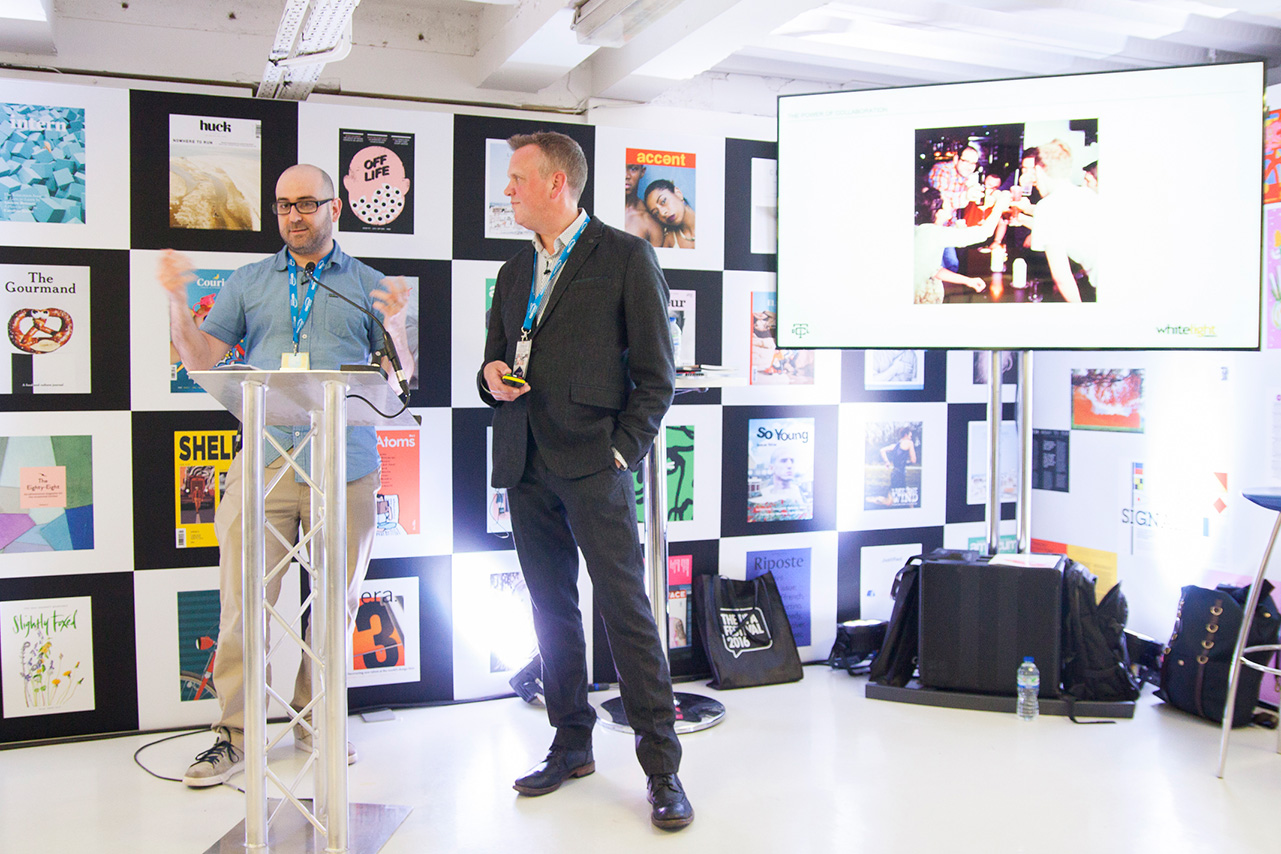
The exchange: Vince Medeiros (Little White Lies) and Fraser Allen (Hot Rum Cow)
White Light Media and The Church of London embarked on an innovative exchange programme way back in 2011. In their joint presentation, Fraser and Vince discussed the collaboration and showed how the systems and processes that had been honed by White Light helped The Church of London to work more efficiently and effectively, while the creativity of The Church of London inspired White Light to create their own magazines Hot Rum Cow and Poppy.
The two companies continue to collaborate today, and whether it’s helping each other out with pitches or holding events together, they find they’re able to offer more by working together than they would be able to individually.
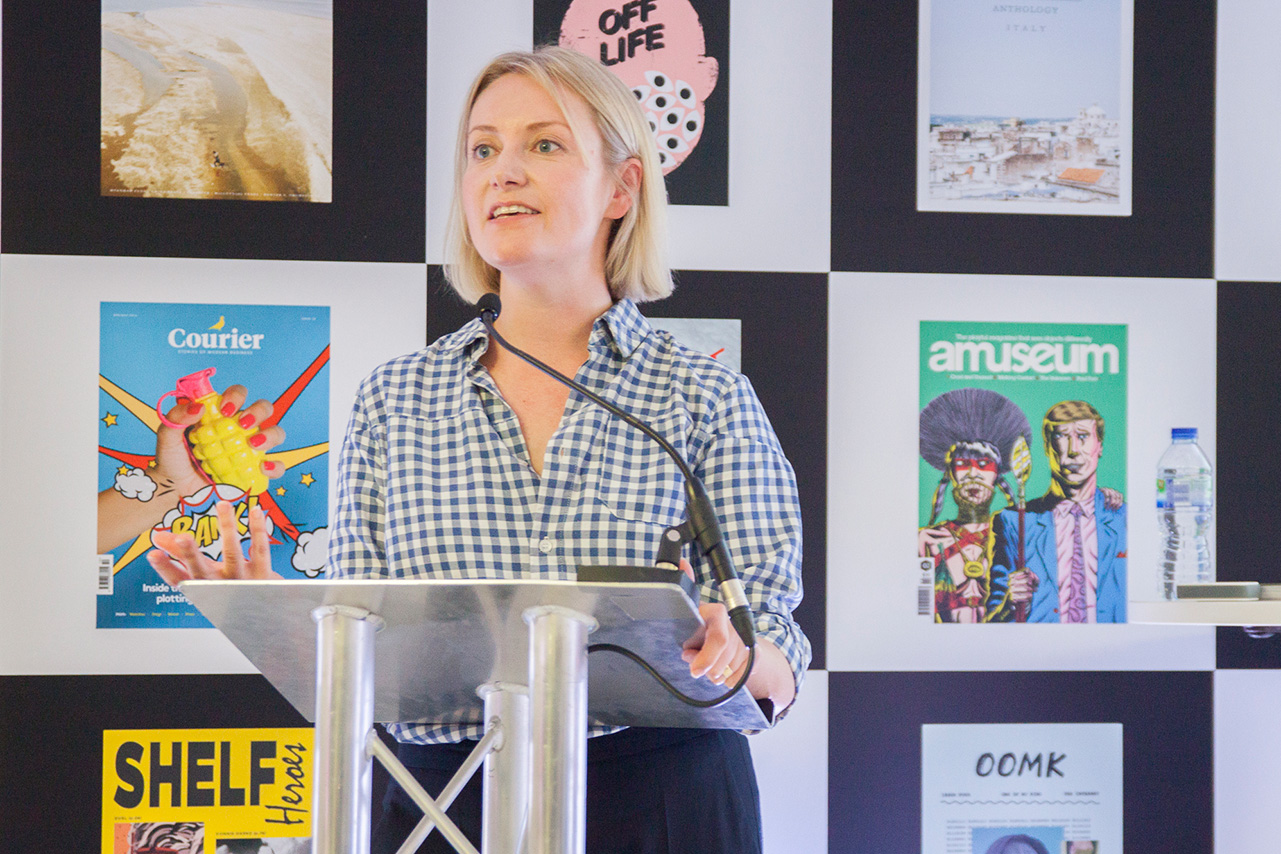
Setting the standard: Penny Martin (The Gentlewoman)
In our final presentation of the day, Penny Martin of The Gentlewoman spoke about her work on the biannual women’s magazine and reflected on its success so far.
The Gentlewoman was launched in the depths of the economic downturn as a ‘sister’ magazine to the already established Fantastic Man, with the same emphasis on that magazine’s substantial interviews and knowing humour.
Featuring women of purpose, combined with an intelligent view on fashion, The Gentlewoman aims to do things differently: “I’d had enough of the shouty tone of conventional women’s magazines telling women what to do and what to buy. I want The Gentlewoman to be the opposite of that – we honour women.”
Penny said that she’s often asked whether The Gentlewoman is a feminist magazine, and noted that of course it is, in the sense that they think women should have equal pay to men, etc, “but it’s not a magazine about feminism, in the same way that it’s not a magazine about politics, or even about fashion really”.
—
Reflecting on the day, my mind keeps returning to something Jeff Taylor said when discussing the changing face of the publishing industry: “The independents can’t be ignored anymore. They’re there in the front of newsagents’ windows, and that’s not about print fetishism; it’s hard economics because the shop owners know what will sell and what they’ll make money from.”
Bringing independent magazines to the PPA Festival for the first time was a fantastic opportunity, and we’re already looking forward to seeing what we’ll be able to do next year.






